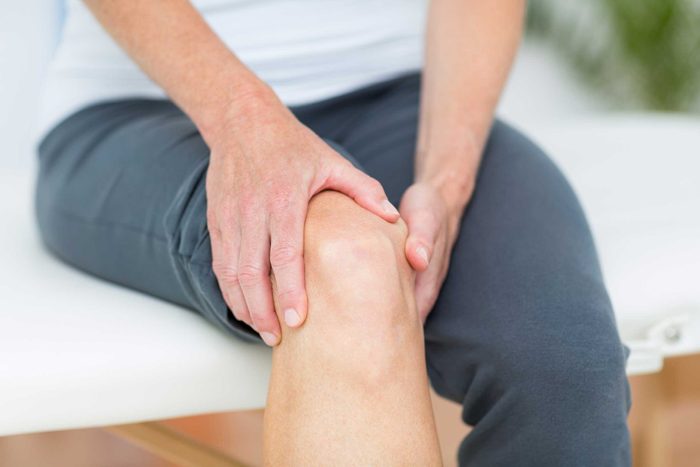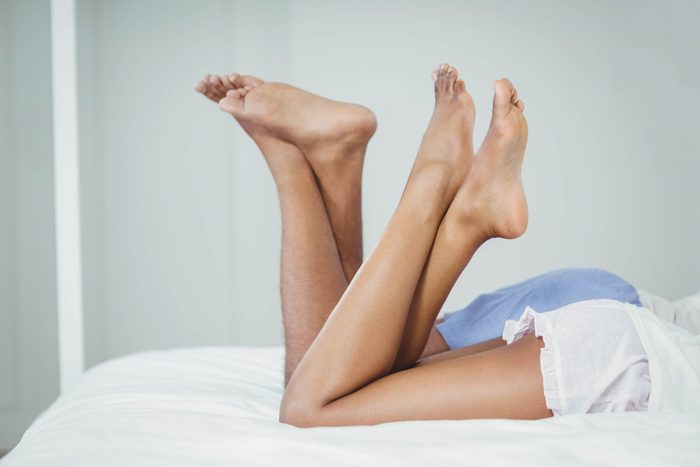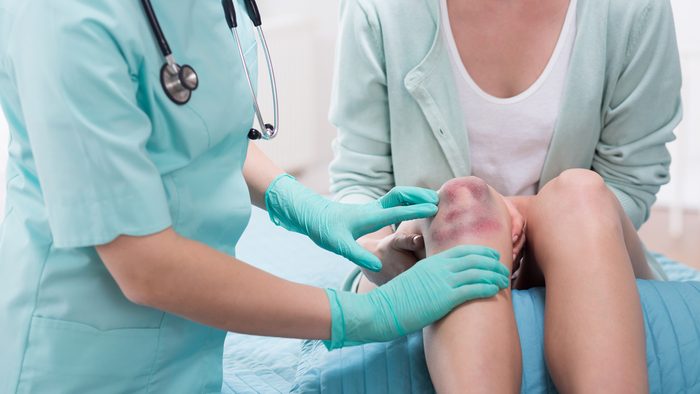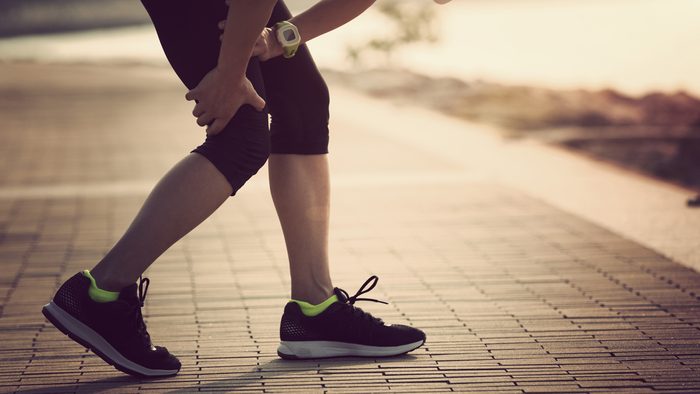
Where did that bruise come from?
A bruise typically appears hours after you injure the tissues just below the skin’s surface, whether it’s from hitting your knee on the coffee table or falling down the stairs. Any kind of injury can cause the capillaries (tiny blood vessels) to rupture, which allows blood to seep into the surrounding tissues. And voilà, a bruise appears on your skin! Use the handy guide below to help you decode your bruise colour.

Pink or red
A fresh bruise can emerge anytime from minutes to hours after you injure yourself. Your skin may start to give off a red or pink hue because of the oxygen-rich blood that is leaking into your tissues from the punctured blood vessels. This stage typically never lasts long, which is why many people don’t notice a bruise until after it becomes a deep purple.

Dark purple or blue
As your red blood cells start to break down, your bruise will progress into a deep purple or blue colour. “Macrophages, [the white blood cells] start to break down these red blood cells,” says Dr. Hooman Khorasani, chief of dermatologic and cosmetic surgery at Mount Sinai Health System. “They do the demolition.” The purple hues are also a result of your blood cells rapidly losing oxygen as the cells leak into the tissues, which gives your blood a blueish hue. Isn’t your skin amazing?

Green
A green bruise is typically one of the first signs it’s healing. As your body continually breaks down those spilled blood cells, it turns hemoglobin, a red protein molecule found in your blood cells, into biliverdin, a green bile pigment that turns your skin green.

Yellow or brown
Your bruise is almost completely healed once it reaches the yellow or brown colour stage. “As the red blood cells are chewed up by the macrophages, your skin starts to get a yellow look,” says Dr. Khorasani. The consumption of these red blood cells then converts biliverdin into hemosiderin and bilirubin, other byproducts of breaking down hemoglobin, which give your skin that yellow or golden brown look. Once the spilled contents from the red blood cells are either reabsorbed or excreted from the body, your bruise will disappear.

How long does a bruise take to heal?
Most bruises take up to two weeks to heal, but some may last longer than others based on the severity of the injury. If you get injured, Dr. Khorasani suggests applying firm pressure and ice to the injured area to seal the blood vessels shut and reduce inflammation. For frequent bruising or bruises that don’t heal, it’s best to consult with your doctor to ensure that your bruise isn’t a sign of something more serious.
Here’s more on how to heal bruises naturally.
